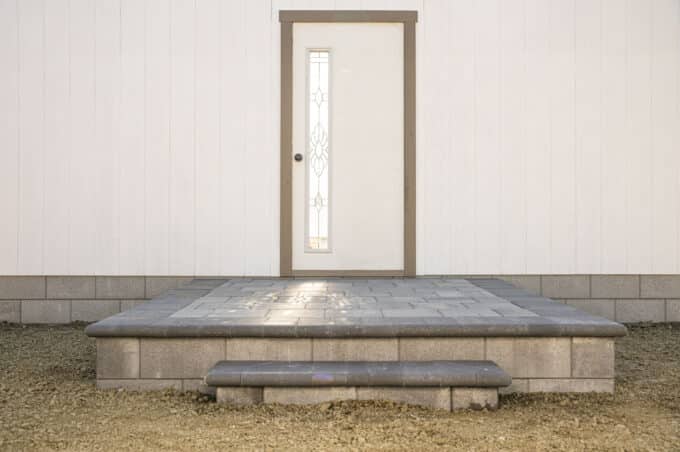
How to Build a Raised Paver Patio
Building a raised paver patio is an excellent option for homeowners who want to expand or raise their outdoor entertainment area and create a cozy, relaxing spot. In this blog […]

To transform a driveway from concrete to paver-laid, we first had to demo the original one. This left an immense amount of pea gravel. Instead of removing it, because it was below finished grade, we decided instead to stabilize it with a compactor and build up a good rock footing to help with longevity.
Poor natural drainage in our example is what led us to integrate a ribbon of permeable paving stones to help excess water drain off quickly.
The first step for any paving stone installation process is to excavate.
Do make sure to request a locate before excavating, especially if it’s in the front of a house like the project shown in the video. This is so you don’t damage any utilities during excavation.
Because of our pea gravel situation mentioned above, we dug out about 13” below finish grade so we could integrate three inches of crushed open rock. Traditionally, you only need about 6” minimum, meaning you’d dig out about 9”.
Make sure when you excavate that you don’t over-excavate. However, if you do, it’s not the end of the world. You can always put a gravel base back in. The goal is to have a good, firm foundation to start from.
The next thing to do when constructing your gravel base is to compact all of your subgrades. You’ll need to lay a minimum of 6” of 3/4″ open graded gravel for a base.
To construct your gravel base you first need to ensure your surface is flat.
For our example project, we could easily tell there was a very minimal slope. Therefore, we were confident we could do most of the gravel base by eye. We didn’t implement string lines until we were almost done, just to make sure everything was perfectly flat. But If you’ve never done a paving stone project where you had to do the gravel base yourself, it may be useful to do the string lines from the beginning.
After laying down geofilter fabric to keep any soil from migrating up into the base, we built up about 3” of 3” crushed open rock and compacted it.
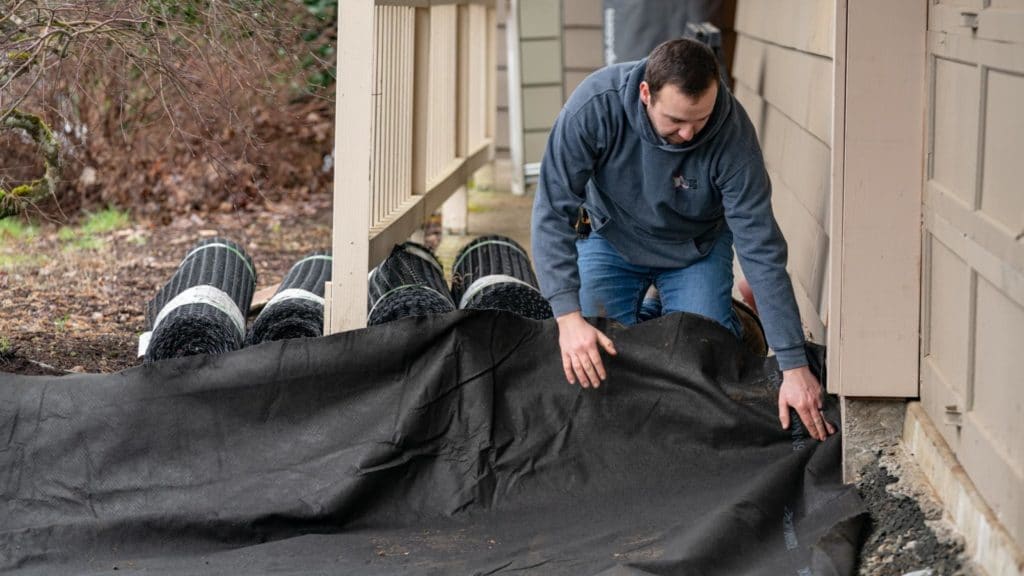
Using the 3″ crushed open rock is not typical, but necessary for our pea gravel situation—we just needed some bigger rock to start out with.
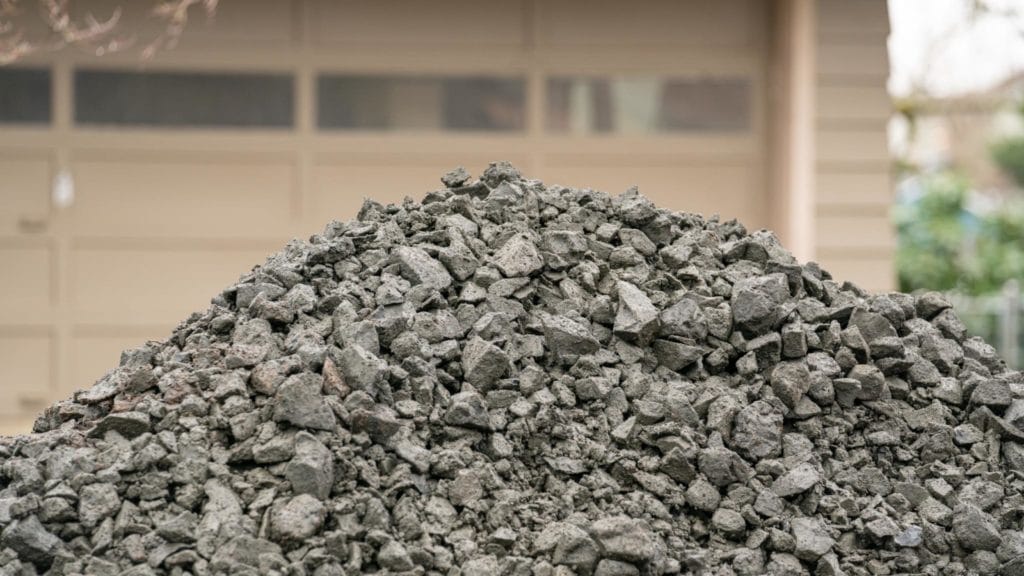
After compacting, we laid our first 4” layer of 3/4″ open gravel and compacted it. Then we laid some geo triaxial grid, which helps stabilize the gravel for longevity.
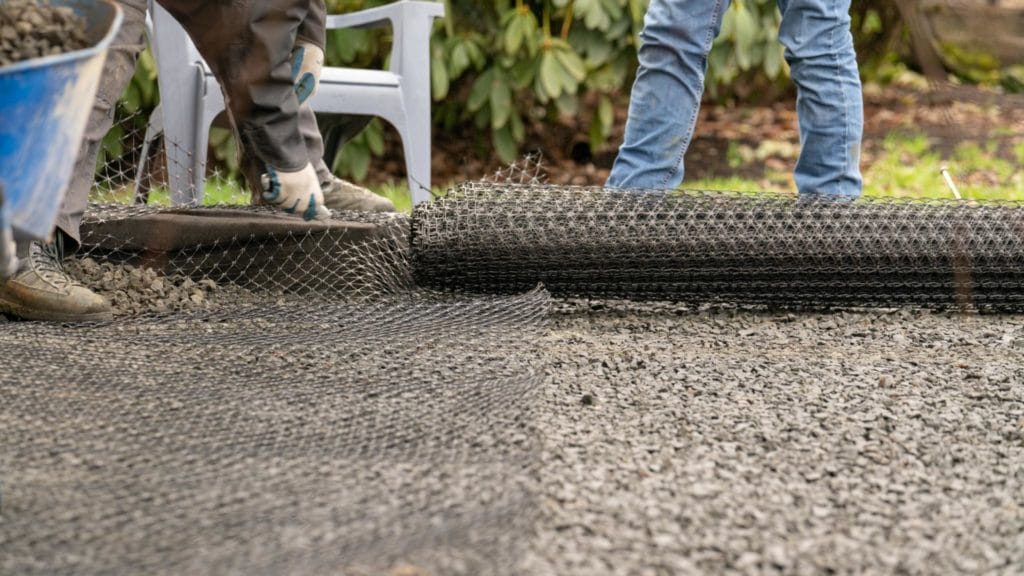
Lastly, we spread the remaining 4” of 3/4″ open gravel and compacted it for a total of about 11”.
As a recap, here are the base layers we put down:
After everything’s compacted, you can lay your bedding.
Note as you look ahead (see Step 6): When installing paving stones with the open-graded base method, you have to use concrete as a form of edge restraint. Plastic doesn’t work because the spikes do not hold well in that open-graded aggregate.
We used Perma-Edge, which is a very good form of edge restraint with concrete. But when you do a driveway, you have to implement at about two feet of either biaxial or triaxial geogrid to help support that edge.
What we used for our bedding layer, because we used the open-graded base concept, is what’s called washed 1/4″-10 crushed gravel.
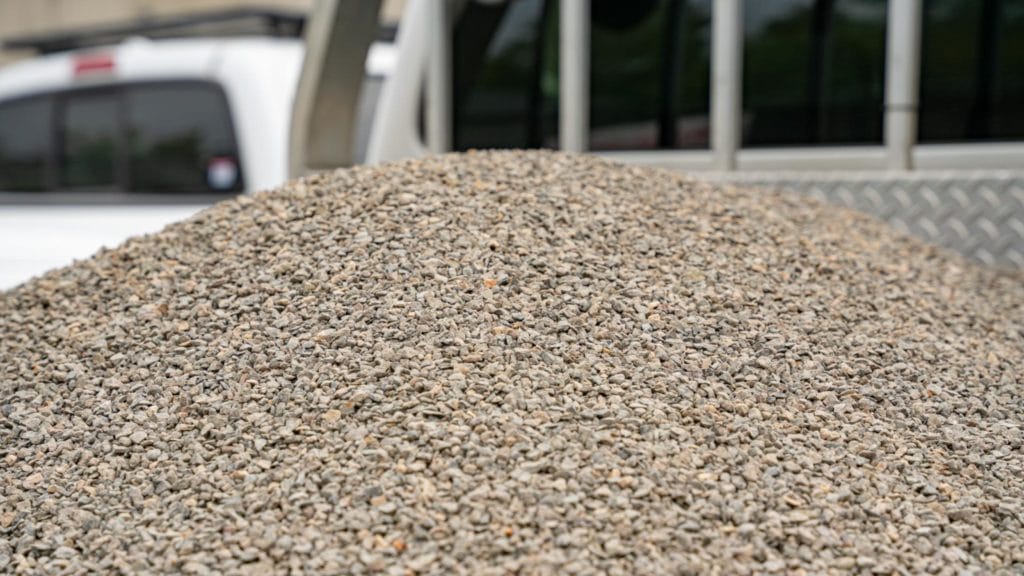
We see a lot of benefits to installing this bedding layer, whether you’re a contractor or doing it yourself. One of them is that it can’t get saturated in the rain like traditional concrete sand, and it also can’t get baked dry in the sun like traditional concrete sand. It’s able to be much more rigid.
You can also walk on it if you need to grab a tool or something like that. As long as you’re tedious, you won’t leave a big impression like you would in traditional concrete sand.
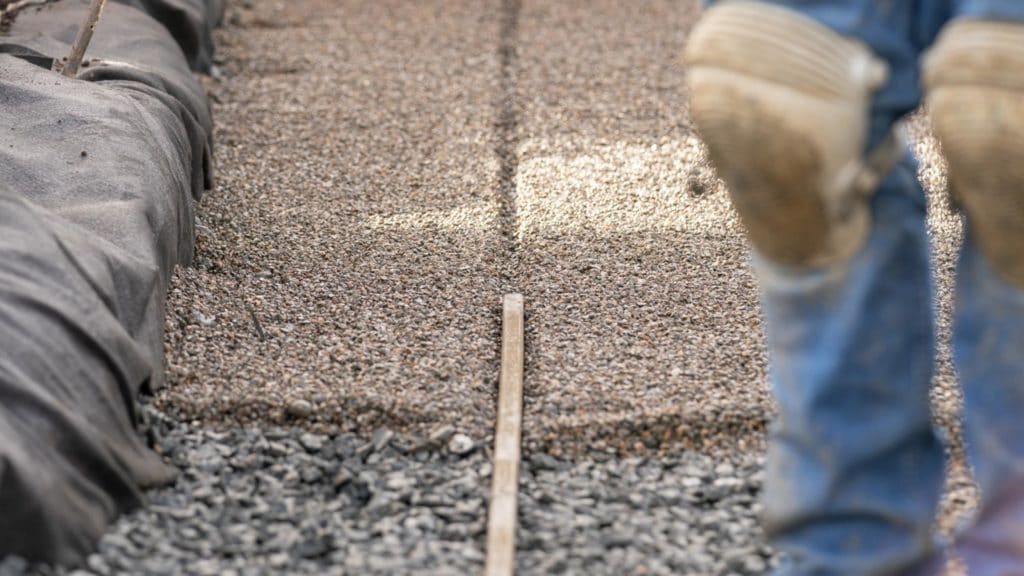
You’re going to screed it just like concrete sand, something about one inch in outside diameter, like our metal screed rails shown in the video. You push it along with a board until you’re done.
Once your bedding layer is screeded out, it’s really the same order of operations you would follow as with concrete sand.
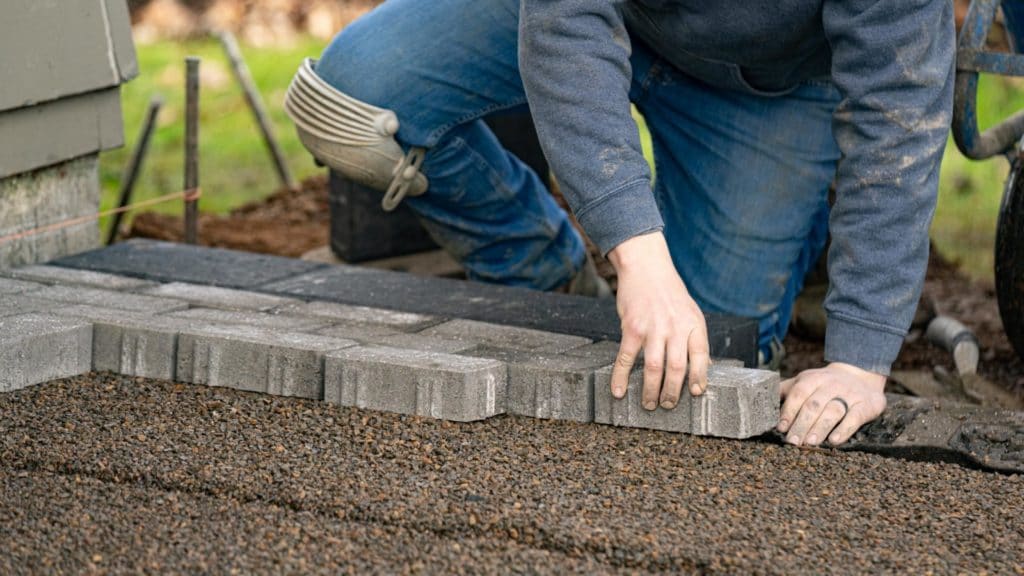
You’ll want to utilize the quick click and drop method as much as possible. Whenever you’re butting stones up against each other, make sure you slide them into a corner and pop them down. You’ll want to set these down into your bedding material and try to tuck them up against each other.
Watch How to Install Permeable Pavers to learn the ins and outs of laying permeable pavers.
As you can see when you watch the video at the top of this page, we had a ribbon around our edge of permeable paving stones. That’s the permeable Holland Pewter. We just implemented that for extra drainage solutions. The majority of the field used our standard Park and Plaza in the Cambridge color blend and the classic Muster K Pattern.
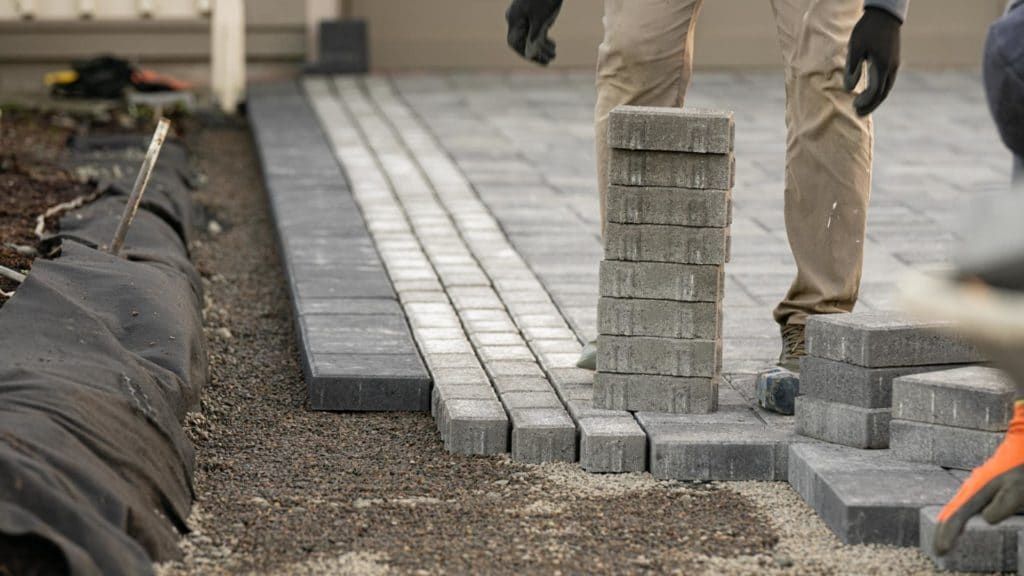
One thing we like about 1/4″-10 is that when you have to adjust stones to keep them square and straight so that when you slide them they’re less likely to get that bedding material up in between the joints. You can make wider joints throughout your project.
When you’re laying border stone around your field of pavers and you start from one end and work toward the other, sometimes you’ll be left with gaps. If there’s a gap that’s typically less than an inch, and you have lots of length of the border, you can also gap those out a little bit to make some slightly larger than uniform joint lines for your sand. That helps hide your gaps pretty well.
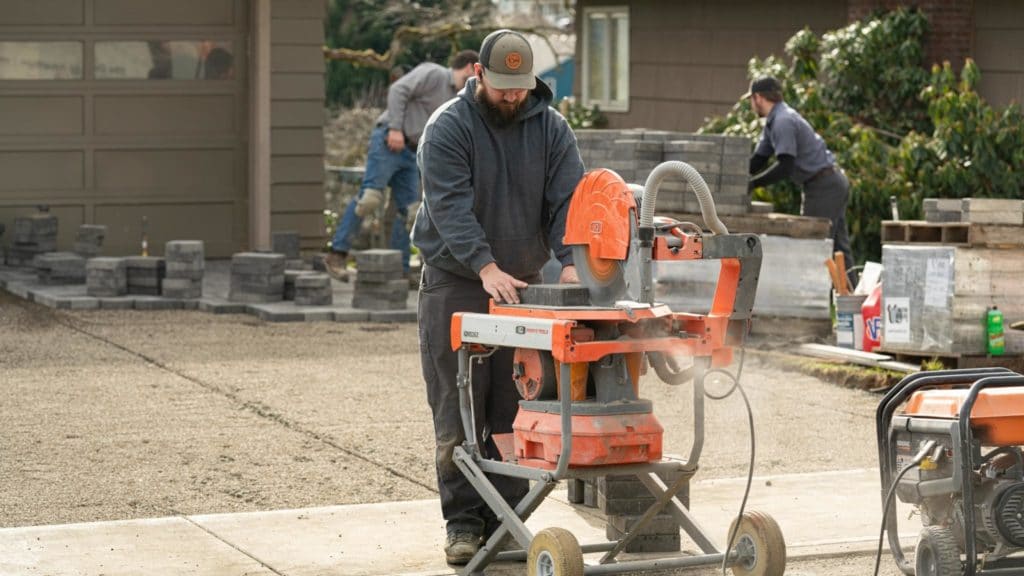
We didn’t want to put any sliver cuts in our gaps because they would be small pieces, making it less strong. So what we did was take two full pieces, cut them slightly larger than half to help make up that difference, and then made it look like just a slightly longer full piece of stone—to be as strong as possible.
With your field completely laid and your border all cut in nicely, you can start installing your edge restraint. We used Perma-Edge in our project.
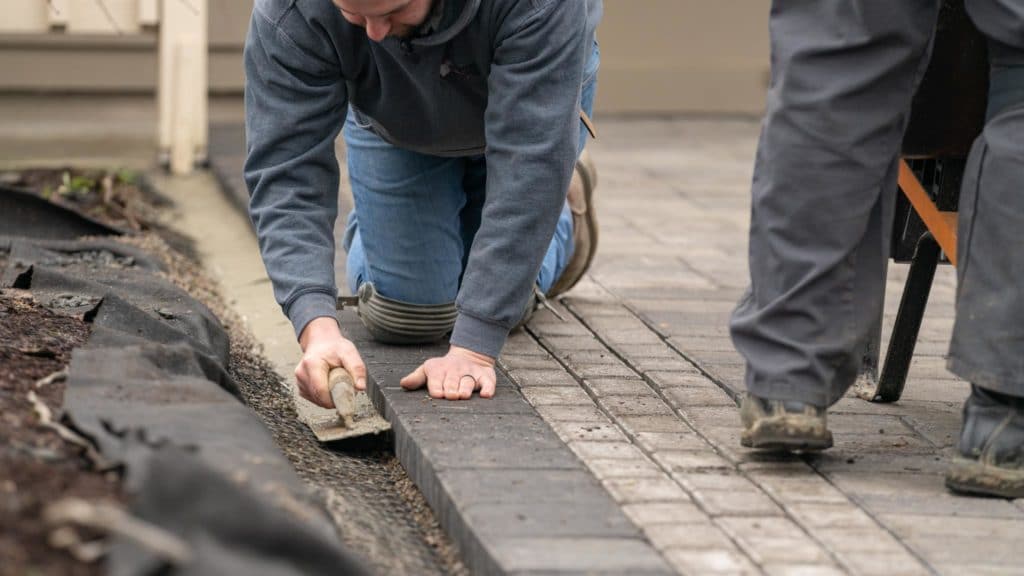
We like Perma-Edge over other concrete edge restraints because it’s much lower profile and it only has to be troweled about 4” wide.
The finishing step is compacting our stones. We like to utilize a roller attachment for our plate compactor. It does help make things move a little bit quicker and provide even compaction. It is not a necessity for all types of paving stones, but you might want to consult your manufacturer per your specific type of paving stones to see if it’s recommended.
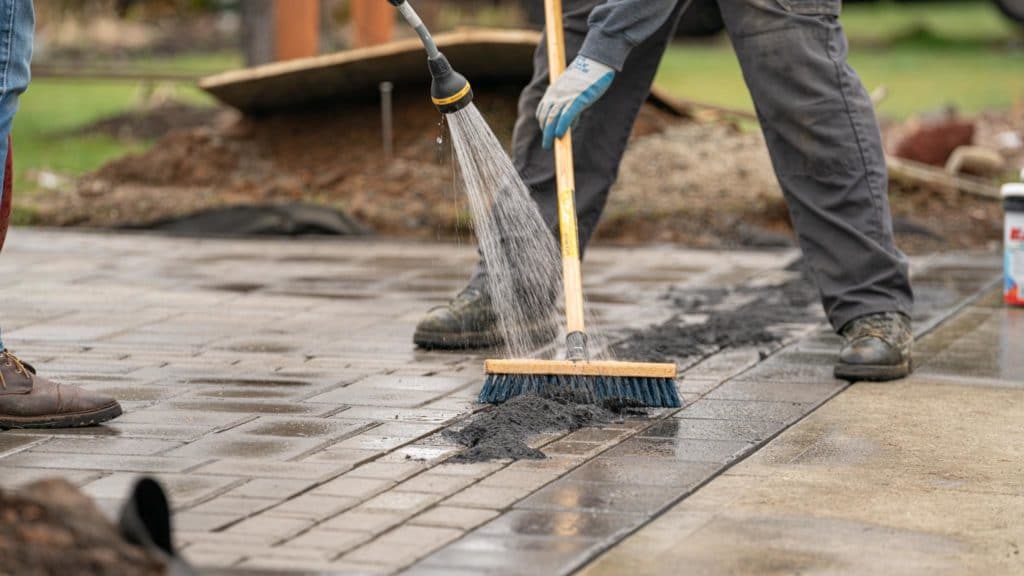
We swept in our field with some fine dry sweeping sand. This works great for most sand applications, but for our permeable ribbons around the borders of our project, we utilized EASY Joint, which is resin sand, similar to polymeric sand, but it’s still permeable.
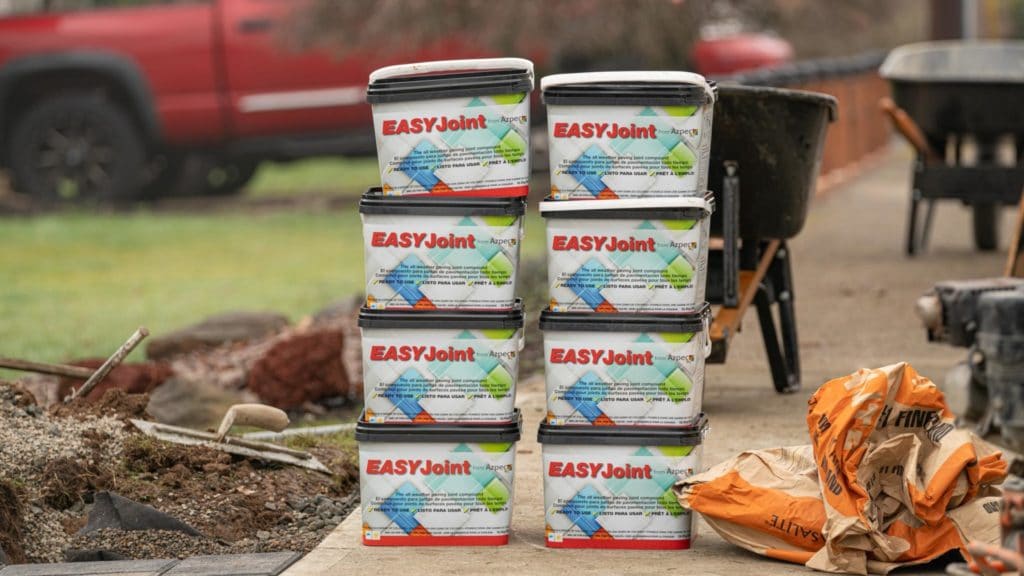
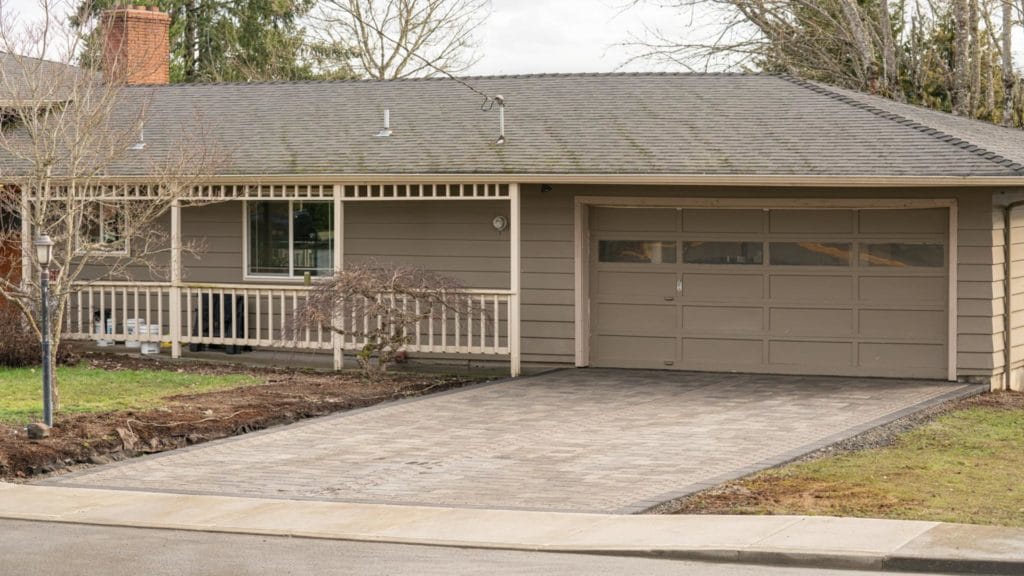
We also have dozens of step-by-step DIY paver installation tutorials right here on WesternInterlock.com/DIY. You can learn how to build just about anything with pavers. You may also get an instant recommendation on the perfect paver for your next project using our Paver Finder Quiz.
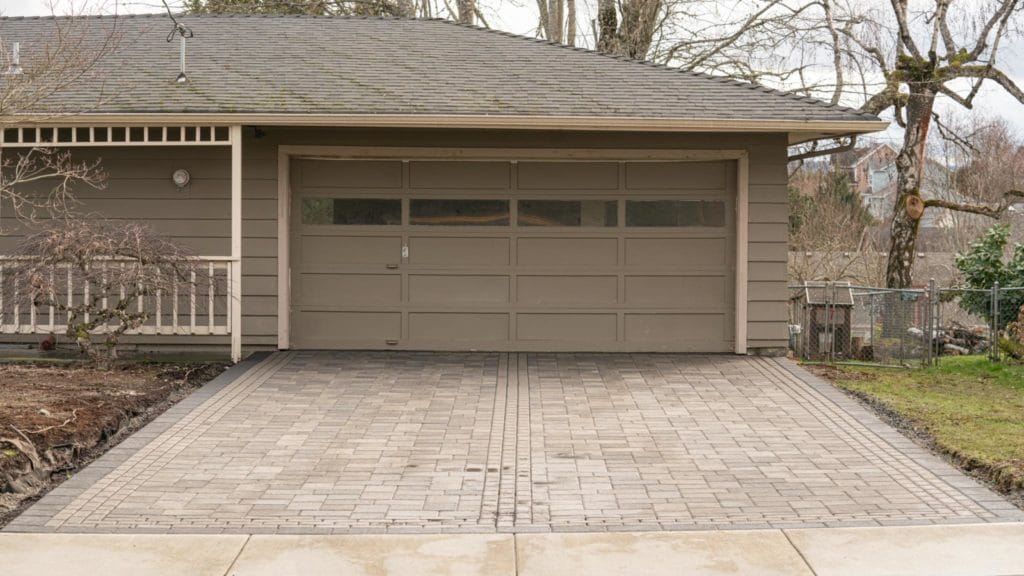
If you’d like to talk with someone about your project, or order pavers, please select Get a Quote on WesternInterlock.com and fill out the form. We’ll get right back to you.

Choosing a paver can sure feel overwhelming. You have to consider size, style, thickness, color, and more. That’s why we made a short and simple quiz that asks a few questions about what you’re looking for and, at the end, provides a recommendation, or two, you can start with.
Learn More